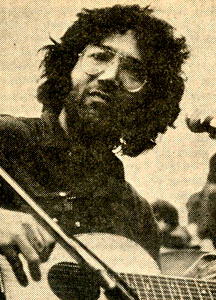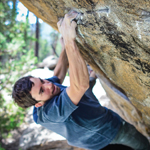Historical Row: Butterfield’s Bygone College of Quantitative Studies, by University Archivist Amanda Nelson

Most Wesleyan alumni know the College of Letters and College of Social Studies, but while these have thrived since their inception in 1958 as part of President Victor Butterfield’s College Plan, there was a third college that didn’t: the College of Quantitative Studies.
When Butterfield first conceived the Plan, he wanted to encourage independent inquiry and prepare students for careers as self-educating adults. He proposed that Wesleyan be made up of a federation of colleges, each with its own faculty, students, and set of programs, where students and faculty could interact across subject areas. In 1959, the implementation of the College of Social Studies and College of Letters began with funding from the Carnegie Corporation, in many ways changing the face of Wesleyan. But there was not yet a program aligned with mathematics and science.
In the summer of 1960, Professors Robert A. Rosenbaum (Mathematics, and later Hon. ’81); Thornton L. Page, Hon. ’59 (Astronomy); and Burton C. Hallowell ’36, MA ’38 (Economics) developed the College of Quantitative Studies (CQS). This college, similar to the others, would cover three years of study with courses in mathematics and in one or more related fields, plus the option of multiple semesters of “problem work” and projects constituting “real world” learning, which would become a bright spot for CQS. Often the projects were brought from local businesses, building ties between the University and Middletown. One of their more well-known projects was with the Connecticut Board of Parole and involved organizing and analyzing data on the history of parolees to show their projected success or failure based on criteria such as age, marital status, and type of crime.
Within the first few years issues began to emerge in the CQS. While all three colleges were evaluated after three years to determine if they would become permanent fixtures, and the 1965 committee recommended continuation of The College of Quantitative Studies, it was not a resounding endorsement.
While CQS began as multidisciplinary, a disproportionate emphasis on one discipline arose, observed the committee in its 1965 report: “CQS more than any other college receives its nurture from one department—Mathematics—rather than the three departments that to a greater or lesser degree support the other colleges. This may explain not only the smallness of the CQS student body, but the decline in student enrollment, as well.” Furthermore, “CQS has been proven particularly successful with the students who already have, or develop, self-discipline, maturity, motivation, and strong interests in quantitative areas. It has been markedly unsuccessful for students lacking these qualities.”
The population of the college dwindled from a peak membership of 39 at the beginning of 1961–62 to just 12 in 1967. Though it had made great strides in community involvement, Director of Projects Robert Singleton felt the decreasing size was too much to overcome and put forward a proposal to abolish CQS. In a March 18, 1967, Wesleyan Argus article about the closure of CQS, Singleton stated that “CQS was becoming too wholly centered around a few men’s ideas because of its dwindling size, something which is detrimental to the general goals of such a program.” Though CQS didn’t last, it didn’t mean there wasn’t a place for the type of multidisciplinary program CQS originally intended to be. Today, this need is served through the College of Integrative Sciences and other programs that teach creative problem-solving across related fields of study.


